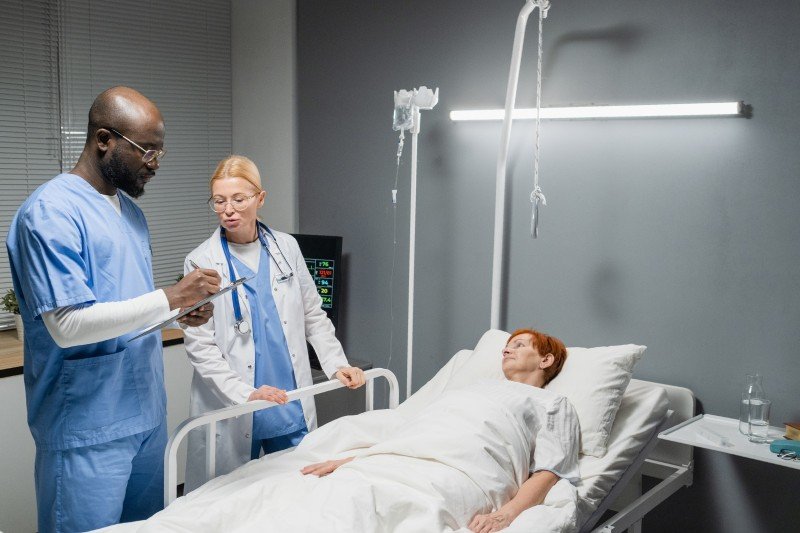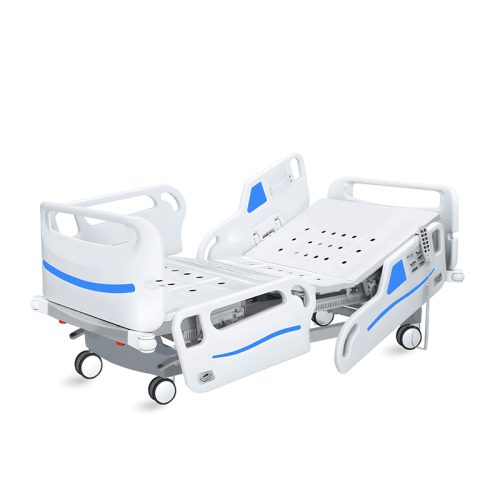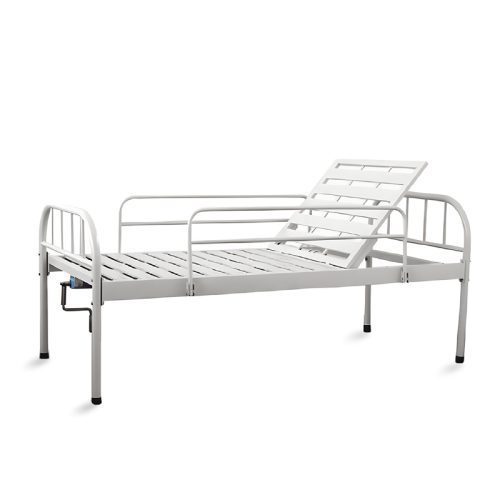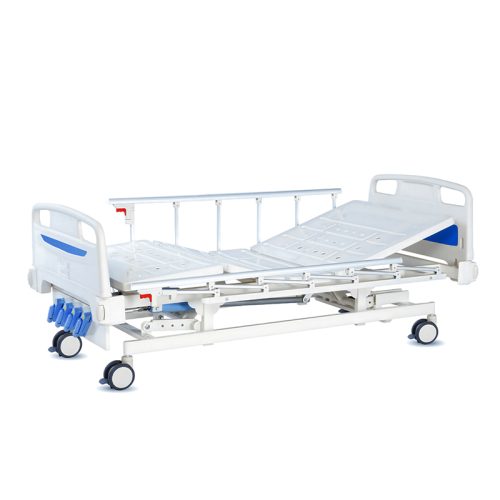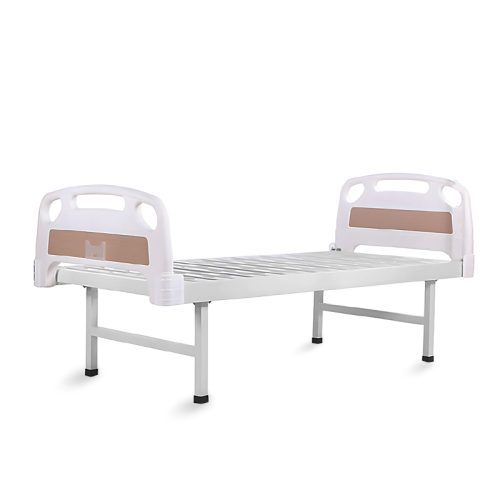
- Bolnišnična postelja
Bolnišnične postelje za domačo uporabo: Praktični vodnik za rešitve na področju zdravstvenega varstva
- Po kelingmedical
### Benefits of Hospital Beds for Home Use
#### 1. **Enhanced Comfort and Health Management**
Hospital beds provide patients with maximum comfort which is crucial for individuals who must spend long durations resting. People who are elderly or who suffer from long-term health problems such as arthritis or heart disease experience discomfort and pain when they stay in one position for too long and might also develop pressure sores. Home hospital beds allow patients to adjust the bed’s head, foot, and height to relieve pressure points which improves blood flow and reduces health risks related to long-term immobility.
Patients can select a position that meets their health requirements through the bed’s features which enable them to raise or lower different sections. These beds offer customized support for comfort and medical needs like lung function and digestion which standard home beds do not provide.
#### 2. **Safety Features to Prevent Falls**
When caring for people at home especially the elderly who may suffer from balance problems, weakness or confusion safety becomes a top priority. Patients receive protection from accidents and injuries through the safety features that hospital beds incorporate. Adjustable side rails on most beds enable caregivers to raise them and prevent patients from accidentally rolling out while asleep or moving positions. Patients can easily access hospital beds when they need help because side rails can be lowered.
Hospital beds feature adjustable heights which lower to create safer transitions for patients moving from lying to sitting or standing positions. Hospital beds include features to minimize the distance patients prone to falling would descend should they slip or lose balance.
These hospital beds offer mobility benefits for both patients and caregivers who require assistance moving around.
Hospital beds designed for home use stand out because they enable patients and their caregivers to move more easily. Patients with mobility impairments or recovering from surgery struggle to change their position or get up from bed on their own. Hospital beds provide electric or manual controls which enable caregivers to easily adjust bed height or angles so patients can comfortably change positions or stand up.
The beds lessen physical strain for caregivers because they normally would need to manually adjust patients’ positions. By raising the bed to a suitable height caregivers can perform feeding, clothing changes or medication administration with reduced physical effort.
#### 4. **Customized Support for Medical Needs**
The design of hospital beds usually focuses on providing specialized support for particular medical conditions. Pressure-relieving mattresses on many hospital beds help patients who remain immobile from developing pressure ulcers which could be life-threatening. Hospital beds with features designed for specialized care support patients who need additional assistance through options such as bariatric weight capacities and respiratory support options.
Home hospital beds with customizable options can support numerous medical issues ranging from chronic pain and sleep apnea to mobility impairment and postoperative healing needs. These beds support patient well-being through customized support systems that meet individual patient needs.
—
When selecting hospital beds for home use check for essential features that meet patient needs.
#### 1. **Adjustability and Versatility**
Hospital beds stand out due to their adjustable design. Patients can modify the bed’s height and the positions of the head and foot sections to meet their individual needs. Adjustable beds work best for patients who need to change their positions often for comfort purposes or medical reasons. Adjustable hospital beds improve patient care by allowing healthcare providers to elevate the head for respiratory support or raise the feet to reduce swelling.
Distributors should focus on beds that offer a wide range of adjustments, including:
Beds with adjustable head and foot sections help improve both patient posture and comfort
Height adjustable beds help caregivers access patients easily while reducing physical strain.
Medical support patients require beds with Trendelenburg and reverse Trendelenburg positions.
#### 2. **Easy-to-Use Controls**
Hospital beds for home use need controls that are straightforward to operate. Elderly patients who have limited mobility need hospital beds that can be adjusted easily and with little physical effort. Patients and caregivers can adjust electric hospital beds easily using remote controls or handheld devices. Although manual hospital beds cost less they need a crank or lever for adjustment which elderly caregivers often find challenging to operate.
Distributors must choose hospital beds which feature easy-to-use controls whether electric or manual to prevent user frustration for both patients and caregivers.
#### 3. **Side Rails and Safety Features**
Hospital beds must have side rails to prevent elderly patients who might fall from bed from doing so. Hospital beds frequently have side rails which caregivers can adjust to either raise or lower according to what the patient requires. Patients who suffer from cognitive impairments or physical weakness benefit from these rails which prevent falls while increasing their safety.
A number of beds include automatic braking systems which keep the bed stable during patient assistance. This functionality prevents unintended bed movement which could potentially injure the patient.
#### 4. **Pressure Relief Mattresses**
Patients who spend long periods in bed frequently develop pressure ulcers. Specialized mattresses that work to minimize pressure while boosting circulation come standard with many home-use hospital beds. Pressure-relieving mattresses use materials like memory foam and air bladders to distribute patient weight evenly which prevents sore development.
Distributors can market beds with pressure-relieving mattresses as a strong selling point because they greatly improve patient care and comfort.
—
Distributors should prioritize hospital beds for home use as their sales potential grows due to the expanding aging population and the desire to age in place.
Hospital beds for home use continue to gain popularity because the elderly population grows and more people prefer aging in place. Hospital beds function as essential home healthcare equipment within today’s medical system to deliver high-quality care for patients at home.
Medical equipment distributors can capitalize on growing market demands by supplying hospital beds for home use. Distributors who supply these beds can serve multiple healthcare providers as well as families and caregivers with a product that proves both practical and necessary.
People no longer view hospital beds for home usage as luxury products because they have become essential in caring for older adults and those who are ill at home. Distributors who provide bed options for various needs and price ranges become essential partners for both home healthcare providers and families.
—
### Zaključek
Elderly patients together with their caregivers and healthcare providers need to prioritize the purchase of hospital beds for home use. These beds deliver multiple advantages including better comfort and mobility together with improved patient safety and health care management. Hospital beds should have adjustable settings and easy operation along with safety features and pressure-relieving mattresses to provide optimal patient care and reduce caregiver strain.
Medical equipment distributors can capitalize on the increasing need for home healthcare by supplying hospital beds that cater specifically to the requirements of elderly patients. Healthcare distributors who offer customizable high-quality beds enable patients receiving home care to obtain the highest level of support and treatment.
—
### FAQ
A hospital bed for home use functions as an adjustable bed to provide support and safety to patients receiving home care especially elderly individuals or those with mobility challenges.
Hospital beds designed for home use function as adjustable beds that boost patient comfort and safety while offering support to homebound patients including elderly people and those with mobility issues.
Hospital beds provide adjustable positions and safety features that help elderly patients at home maintain comfort and safety while receiving care.
Elderly patients who are bedridden or have chronic conditions benefit from hospital beds which feature adjustability, side rails and pressure-relieving mattresses that promote comfort and better health outcomes.
Home hospital beds come in three main types which are manual, semi-electric, and fully electric models.
Home-use hospital beds come in three main types which are manual models, semi-electric models and fully electric models. Different models come with unique levels of adjustability and user simplicity which help families and caregivers choose the most suitable product according to their specific requirements and financial resources.
#### 4. **How do hospital beds help caregivers?**
Caregivers benefit from hospital beds because they can adjust them to the correct height which simplifies patient daily activity assistance. Hospital beds enable caregivers to minimize their physical effort while maintaining patient safety.
Hospital beds available for home use feature specialized functions which enable them to meet special medical requirements.
Home hospital beds often have special features such as bariatric weight capacity and pressure-relieving mattresses along with respiratory support adjustments to serve the particular medical requirements of patients.
—
Modern healthcare depends on home hospital beds because they deliver essential support for older adults and make caregiving tasks more effective. For distributors, offering a range of high
Quality beds allow distributors to enter the expanding home healthcare market and fulfill growing needs for patient-focused care solutions.
📧 E-pošta: inquiry@shkeling.com
🌐 Spletna stran: www.shkeling.com.cn
Veselimo se uspešnega sodelovanja z vami!

